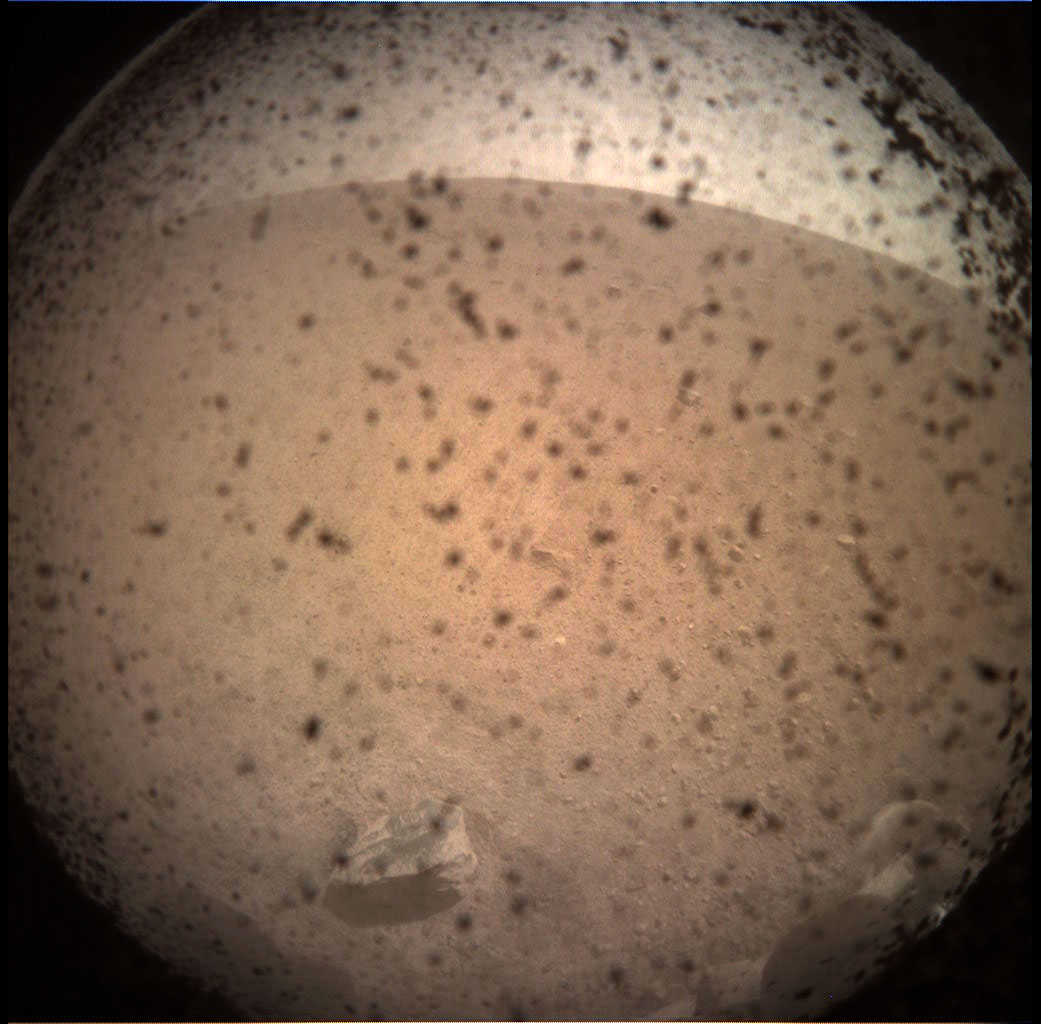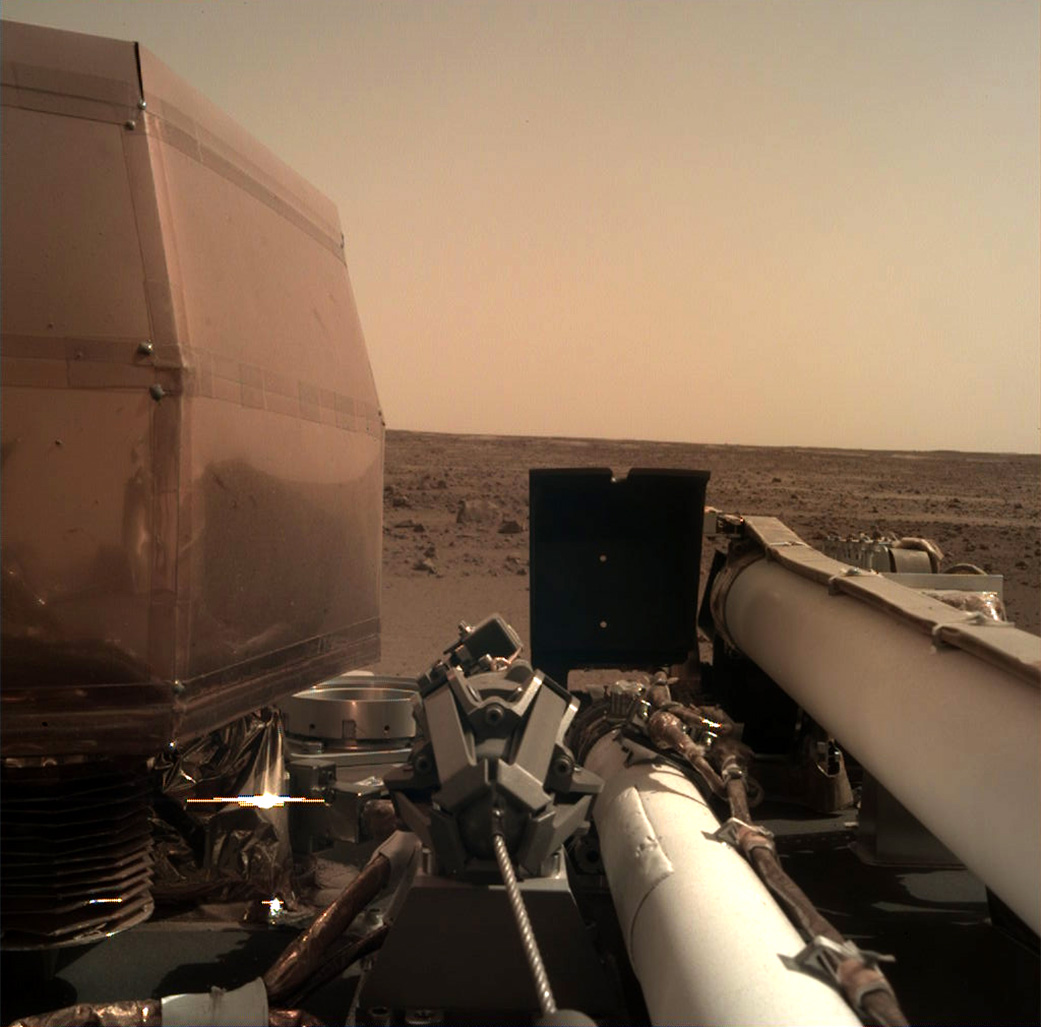Last night’s 10 minutes of terror as the InSight Mars Lander descended to the Martian surface at 12,300 MPH were a nail-biter for sure, but now the robotic science platform is safe and sound — and has sent pics back to prove it.
The first thing it sent was a couple pictures of its surroundings: Elysium Planitia, a rather boring-looking, featureless plane that is nevertheless perfect for InSight’s drilling and seismic activity work.
The images, taken with its Instrument Context Camera, are hardly exciting on their own merits — a dirty landscape viewed through a dusty tube. But when you consider that it’s of an unexplored territory on a distant planet, and that it’s Martian dust and rubble occluding the lens, it suddenly seems pretty amazing!
Decelerating from interplanetary velocity and making a perfect landing was definitely the hard part, but it was by no means InSight’s last challenge. After touching down, it still needs to set itself up and make sure that none of its many components and instruments were damaged during the long flight and short descent to Mars.
And the first good news arrived shortly after landing, relayed via NASA’s Odyssey spacecraft in orbit: a partial selfie showing that it was intact and ready to roll. The image shows, among other things, the large mobile arm folded up on top of the lander, and a big copper dome covering some other components.
Telemetry data sent around the same time show that InSight has also successfully deployed its solar panels and its collecting power with which to continue operating. These fragile fans are crucial to the lander, of course, and it’s a great relief to hear they’re working properly.
These are just the first of many images the lander will send, though unlike Curiosity and the other rovers, it won’t be traveling around taking snapshots of everything it sees. Its data will be collected from deep inside the planet, offering us insight into the planet’s — and our solar system’s — origins.
from TechCrunch https://tcrn.ch/2DO4GVp
via IFTTT


